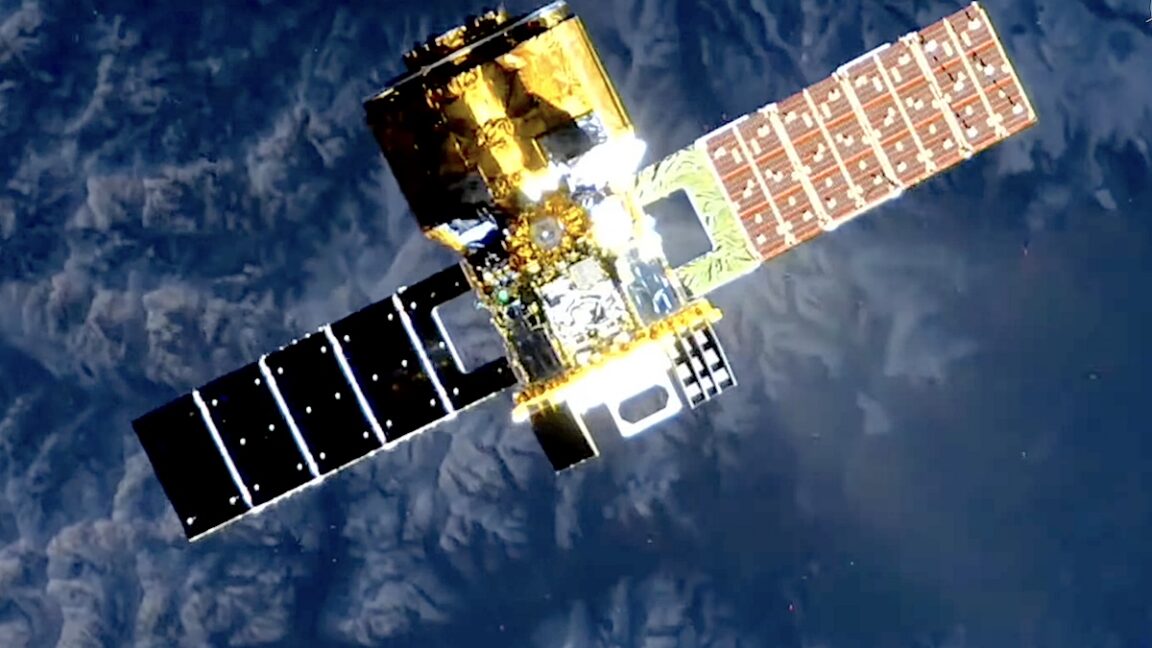Copyright Ars Technica

A cargo ship from Japan pulled alongside the International Space Station on Wednesday, maneuvering close enough for the lab’s robotic arm to reach out and grab it as the vehicles soared 260 miles over the South Atlantic Ocean. “HTV capture complete,” Japanese astronaut Kimiya Yui radioed from the ISS. “I just want to say congratulations to all teams and people involved in this mission. Also, thank you very much for your hard work and support for the first HTV-X mission.” The HTV-X spacecraft is an upgraded cargo freighter replacing Japan’s H-II Transfer Vehicle, which successfully resupplied the space station nine times between 2009 and 2020. At the conclusion of the HTV program, Japan’s space agency preferred to focus its resources on designing a new cargo ship with more capability at a lower cost. That’s what HTV-X is supposed to be, and Wednesday’s high-flying rendezvous marked the new ship’s first delivery to the ISS. “This is a historic event in the Japanese space program,” Yui said. “This spacecraft is so beautiful and shiny, and this is representing our bright future. Thank you again for delivering these important supplies and experiments. I can’t wait to open this golden treasure box.” A gorgeous video downlinked from orbit showed Japan’s newest spacecraft approaching from underneath the ISS. The ship’s bright golden thermal insulation stood out against the dark blue and green landscape of the planet far below, giving it the appearance of a supersized insect flying in formation with the station. Resupply missions to the space station have become fairly commonplace, but it’s no easy feat to deliver equipment to an outpost speeding around the planet at nearly 5 miles per second. As the ISS nears the end of its life—decommissioning is set to begin in 2030—one of the program’s enduring legacies has been fostering the development of a spectrum of crew and cargo vehicles to service it. SpaceX developed the Cargo Dragon and Crew Dragon capsules to resupply the ISS. Europe’s Automated Transfer Vehicle, which flew five times to the space station, was the basis for the European-built service module for NASA’s Orion spacecraft, now a core element of the Artemis lunar program. NASA is applying technology from Northrop Grumman’s Cygnus cargo freighter to build parts of the Gateway space station to be constructed in orbit around the Moon. The European Space Agency hopes to use the ISS as a destination for its own new commercial supply ships in a bid to emulate what NASA did in the United States with SpaceX and Northrop Grumman. And without the ISS, Russia’s human spaceflight program might be dead today. Ins and outs of HTV-X Yui used the outpost’s robotic arm to grapple the HTV-X spacecraft at 11:58 am EDT (15:58 UTC) on Wednesday. The capture capped a three-and-a-half-day transit from a launch pad on Tanegashima Island in southern Japan. The spacecraft flew to space atop Japan’s H3 rocket, replacing the H-II launcher family used for Japan’s previous resupply missions to the ISS. The H3 and HTV-X are both manufactured by Mitsubishi Heavy Industries. Once in orbit, HTV-X unfurled its power-generating solar panels. This is one of the new ship’s most significant differences from the HTV, which had its solar panels mounted directly on the body of the spacecraft. By all accounts, the HTV-X’s modified computers, navigation sensors, and propulsion system all functioned as intended, leading to the mission’s on-time arrival at the ISS. Rob Navias, a NASA spokesperson, called the HTV-X’s first flight “flawless” during the agency’s streaming commentary of the rendezvous: “Everything went by the book.” At 26 feet (8 meters) long, the HTV-X is somewhat shorter than the vehicle it replaces. But an improved design gives the HTV-X more capacity, with the ability to accommodate more than 9,000 pounds (4.1 metric tons) inside its pressurized cargo module, about 25 percent more than the HTV. The new spacecraft boasts a similar enhancement in carrying capacity for external cargo, such as spares and science instruments, to be mounted on the outside of the space station. Japan provides resupply services to the space station to help reimburse NASA for its share of the research lab’s operating costs. In addition to space station missions in low-Earth orbit, Japanese officials say the HTV-X spacecraft could haul logistics to the future Gateway mini-space station near the Moon. Officials plan to launch at least three HTV-X missions to the ISS to cover Japan’s share of the station’s operating expenses. There are tentative plans for a fourth and fifth HTV-X that could launch before 2030. The second HTV-X mission will attempt Japan’s first automated docking with the space station, a prerequisite for any future resupply missions to the Gateway.



